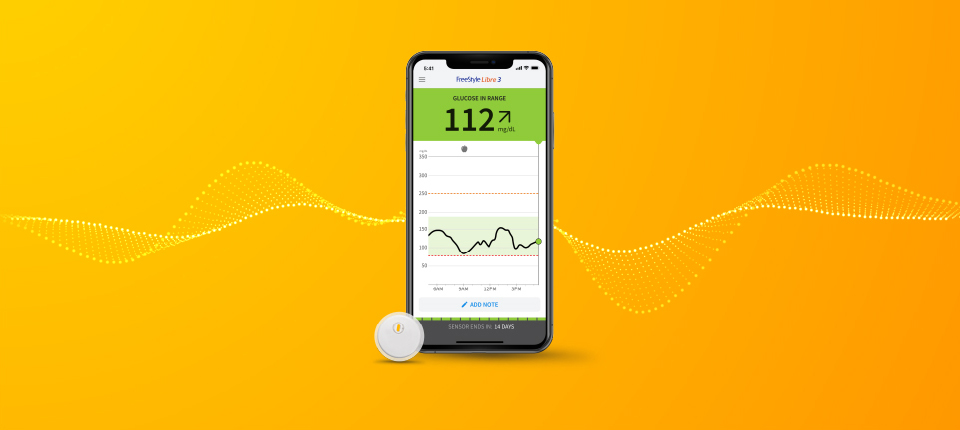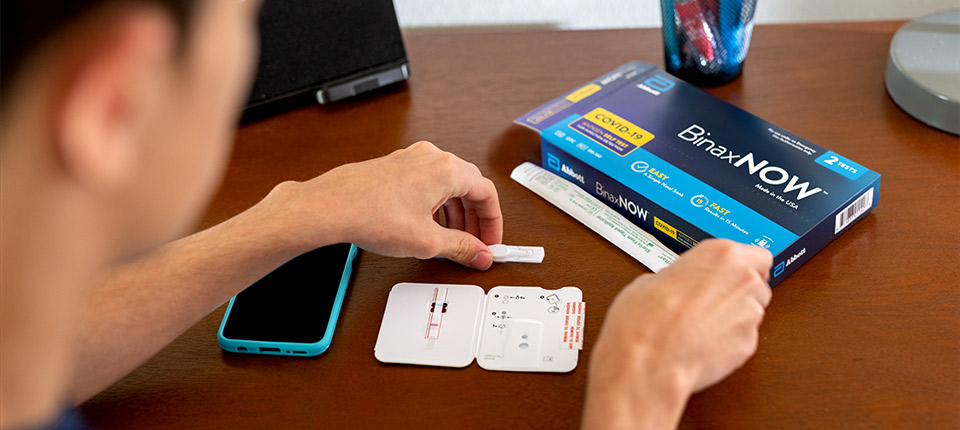Healthcare providers around the world all face a common problem: they are swimming in data. Patient records, lab test results, real-time readings from wearable devices are just the start for administrators, doctors and staff.
How can all those numbers turn into better outcomes for patients?
At Abbott, data comes from across its product portfolio: Its position as a leading diagnostics supplier, its role in supplying equipment that screens a majority of the world’s blood supply and new data from its growing lineup of medical devices that measure a person’s heart rhythms or blood glucose levels.
Experts believe that many of healthcare's future innovations will not come from new devices or technologies but how we use the data to find new breakthroughs in patient care – from how hospital systems operate to treatments a patient receives.
What if physicians had visualized data tracking a patient history for years at their fingertips as they decide on their treatment? What if a hospital system could run an algorithm that could identify disease earlier on? With 70% of critical clinical decisions being based on lab results, the opportunity to harness that data around patient care is among the fastest-growing opportunities for medical technology companies.
In this conversation with Ramiro Roman, Abbott’s divisional vice president and general manager of its Diagnostics Professional Services, he explores where the hunt for data insights could take the industry. As manager of the company’s AlinIQ suite of professional services that help hospitals get the most from their data, Roman is at the forefront of the industry’s hunt for efficiency, effectiveness and better patient care.
Q: Dealing with medical data has long been a challenge for providers; what’s different today?
A: You’ve got new data sources appearing every day – and because no two hospitals or clinics are alike, making sense of that new data is harder because computers may not talk with each other. What we want to understand is how can you take all these sources together and find out how the organization is really performing in ways that didn’t seem possible just a few years ago? The opportunity is to avoid the "bigness" of big data. We want to find the insights that help lab clinicians and ultimately physicians meet goals such as value-based care, where they’re rewarded not on volume but by better patient outcomes.
Q: What kinds of solutions can healthcare providers try to help thrive in this sea of data?
A: The power comes from taking the sets of data and combining them into actionable intelligence. We partner with our customers using our deep industry knowledge to help them come up with ways to track all these data streams and then make them actionable for their health system. That can add value for administrators making high-level decisions on how to offer care, and on down to doctors and nurses who are making real-time decisions that need quick access to complete patient histories in the form of visualized data, for example.
Our AlinIQ tools are agnostic on where data comes from – whether it’s our own devices and lab platforms or anyone else’s. Our service uses this information to help the customer build the insights based on their pain points or areas of opportunities. Perhaps it’s forecasting in patient populations that are underserved. Perhaps it’s predictions on how people living with diabetes see improved care by looking at long-term data compared to the latest lab results.
In fact, we just launched our latest product, Abbott’s AlinIQ Integrated Platform. This technology gathers data points from across the continuum of care – including medical and lab data and, over time, areas such as financial and human resources – to give healthcare providers including laboratorians visualizations of their combined data. Our professional services group acts as consultants to identify the pain points and data sets outside of the lab -- for example, how can we help laboratory clinicians work more efficiently in an era when fewer people are entering the lab profession. Or how can we give doctors a more complete view of a patient’s information to help them determine the appropriate diagnostic testing recommendations.
Q: Are service-like offerings the future of medical technology companies?
A: I feel that data is going to be most effective if it's available right at the moment of care to help shape treatments. To do that, the insights have to be personalized to that hospital’s particular pain points. In the healthcare industry, about 40% of technology projects are abandoned or fail to meet business requirements, so to see sustainable change, we need to find the right balance between consulting and technologies.
We bring a lot of value right now in the form of diagnostic devices and tests we offer around the world. We’re very close to how the data gets created at the patient and laboratory levels and that gives us a unique perspective on how to bring the total picture together for better results. That ultimately drives what everyone wants in a healthcare system; efficiency to handle patient volumes with effective outcomes, all while being less costly.
Q: Much of the work in this area seems nascent; what should we look for as healthcare tries to solve its data problem?
A: We've seen data compiled from disparate places before and the power it can have to help people live better lives. Books sitting in libraries around the world are now available at the click of a finger. One of the last frontiers is healthcare – I believe mainly because of the critical role of keeping our medical information secure. Yet even data sitting within the same hospital walls could be harnessed to make big strides in giving doctors the tools and insights to deliver the best care.
On a bigger stage, building more efficient health systems powered by these insights will help us address some of the biggest chronic health threats across the planet – cardiovascular disease, infectious diseases and even cancer.
Our devices and products make a big difference today; what’s exciting is the potential to find even better ways to apply those treatments and address health issues, and that’s through analytics and insights. The hospital lab has a lot of potential to do more than just process tests, and we like to start from there in thinking differently about the way our customers operate. In many ways we’re just starting, but it’s going to scale quickly.






FOLLOW ABBOTT